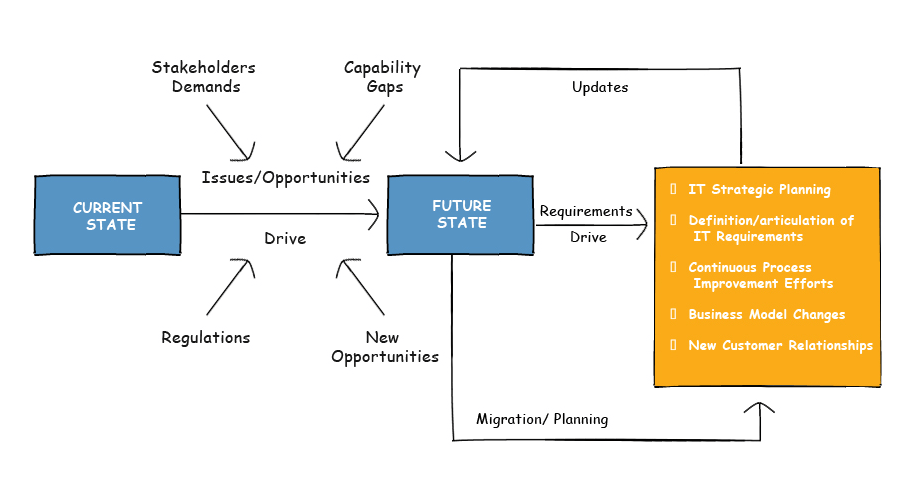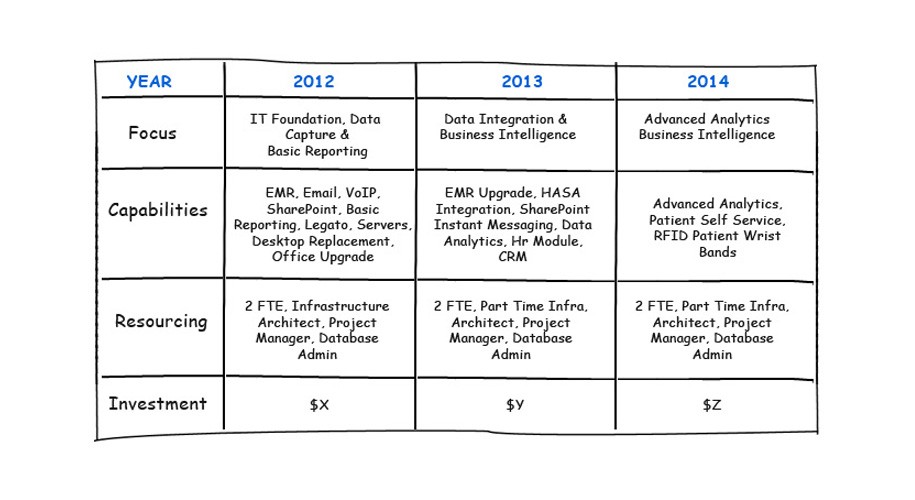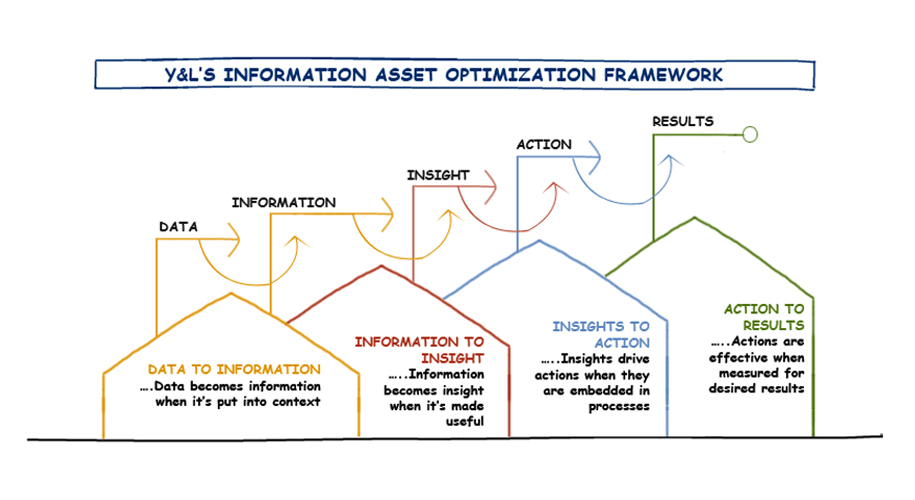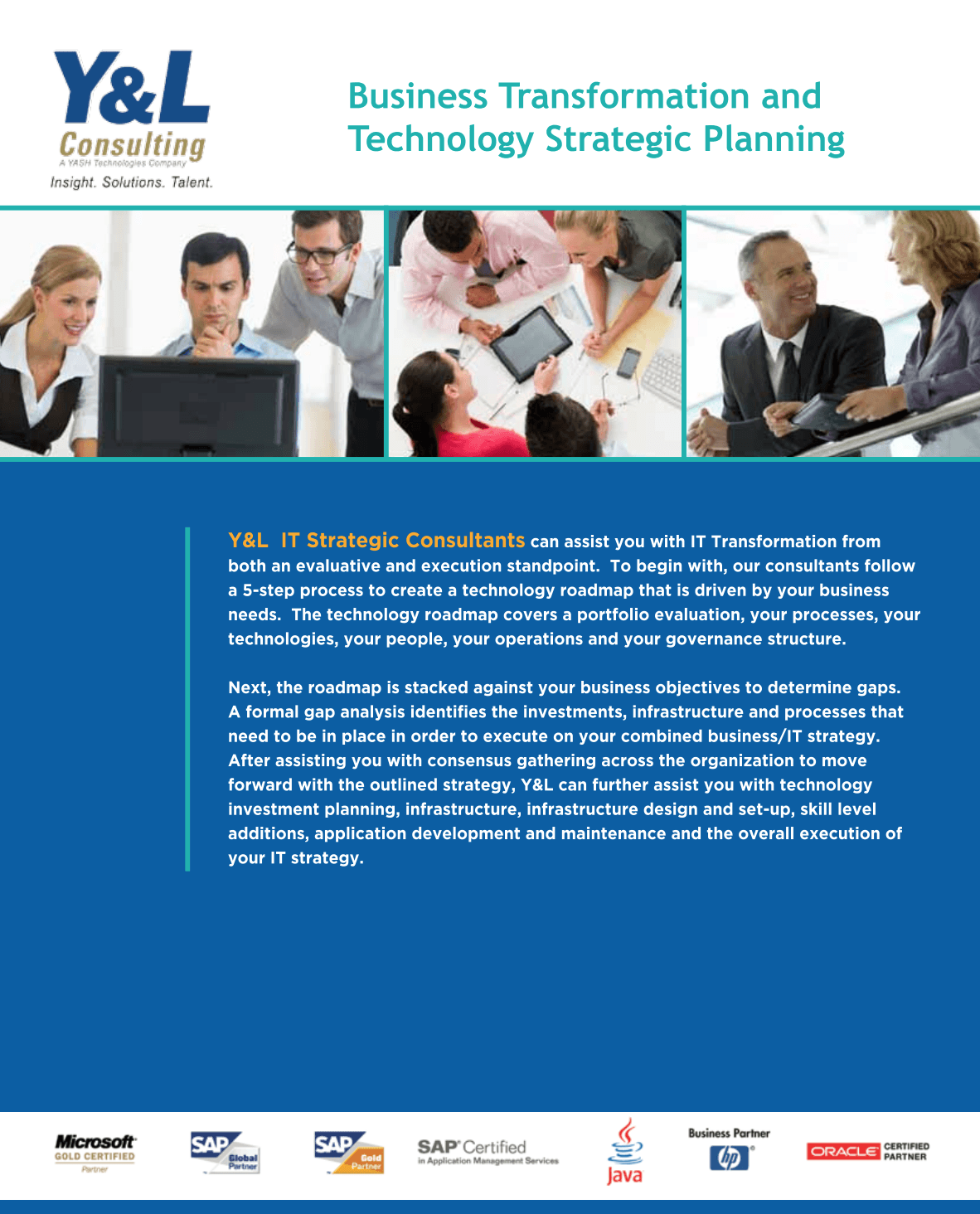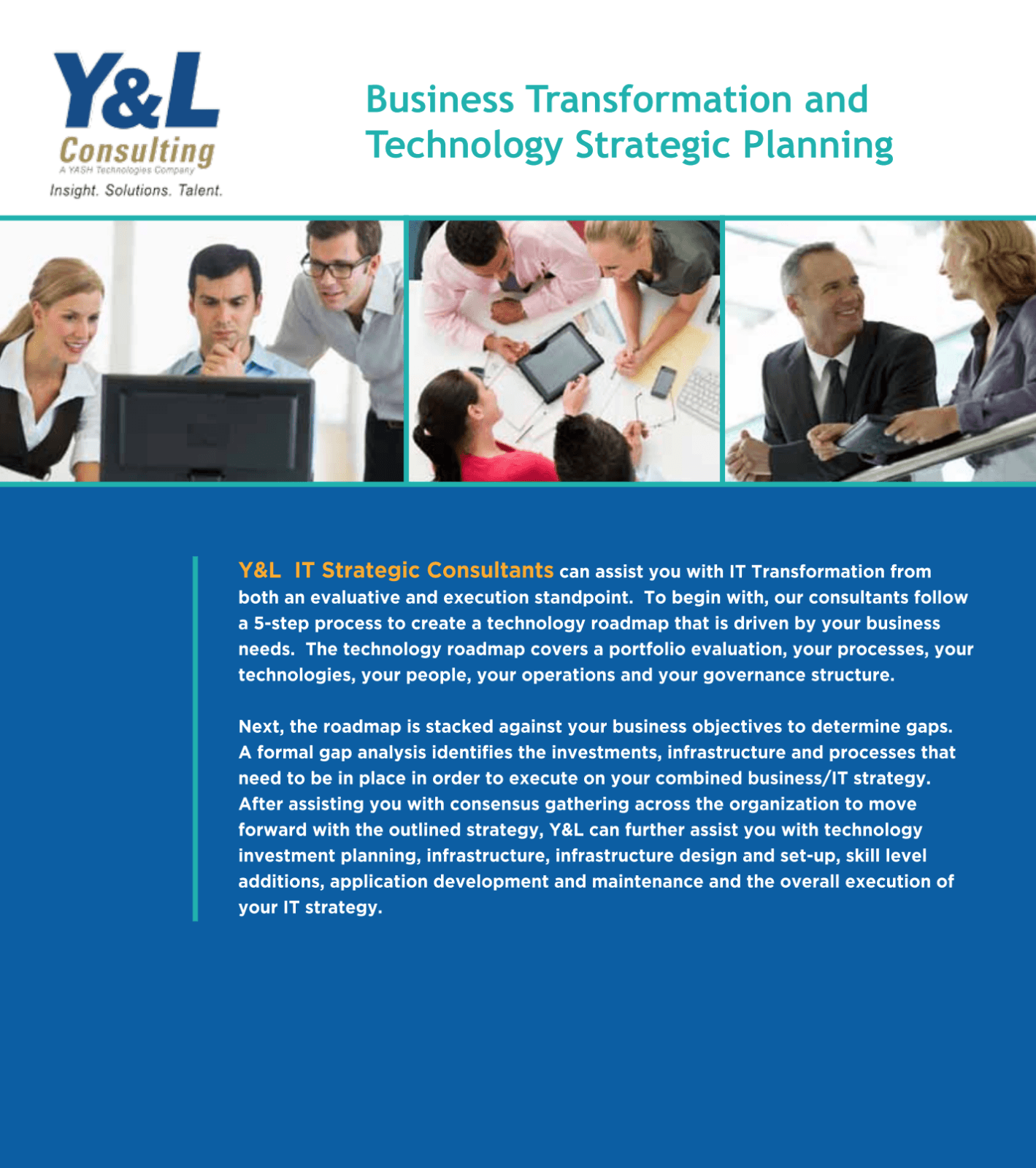IT Strategy
Every organization is unique with its own vision of the future and a resulting set of strategic objectives. The creation of an effective technology strategy plan requires a thorough understanding of business demands, strategic drivers, current business issues, current technology footprint, technology gaps, and excellent San Antonio business application development expectations.
Developing a Technology Roadmap
To gain a better understanding of your organization, Y&L IT Strategy Consultants will leverage our 5-step process that includes in-depth stakeholder interviews, site assessment, and use of our library of templates to collect data and create a technology roadmap driven and aligned with your business needs. This due diligence process will involve the participation of your staff and therefore requires a commitment to collaborate and provide various details about your company’s technology infrastructure.
The final deliverables from this due diligence process will include the current baseline (various portfolio’s and current set of technology and business issues), aggregated business-driven technology needs that align with your business strategy, the identification of technology and functional gaps, and a detailed plan on how to fill those gaps, including staffing and investment recommendations. The resulting roadmap will provide your company with the information required to make better technology investment decisions now and in the future.
Y&L Consulting has repeatedly and successfully leveraged this process with a number of small and large customers to define technology roadmaps aligned with business needs.
A well-defined technology roadmap aligns business and technology strateg, and allows the IS department to better plan and manage its people, processes, projects, technology infrastructure, and investment decisions.
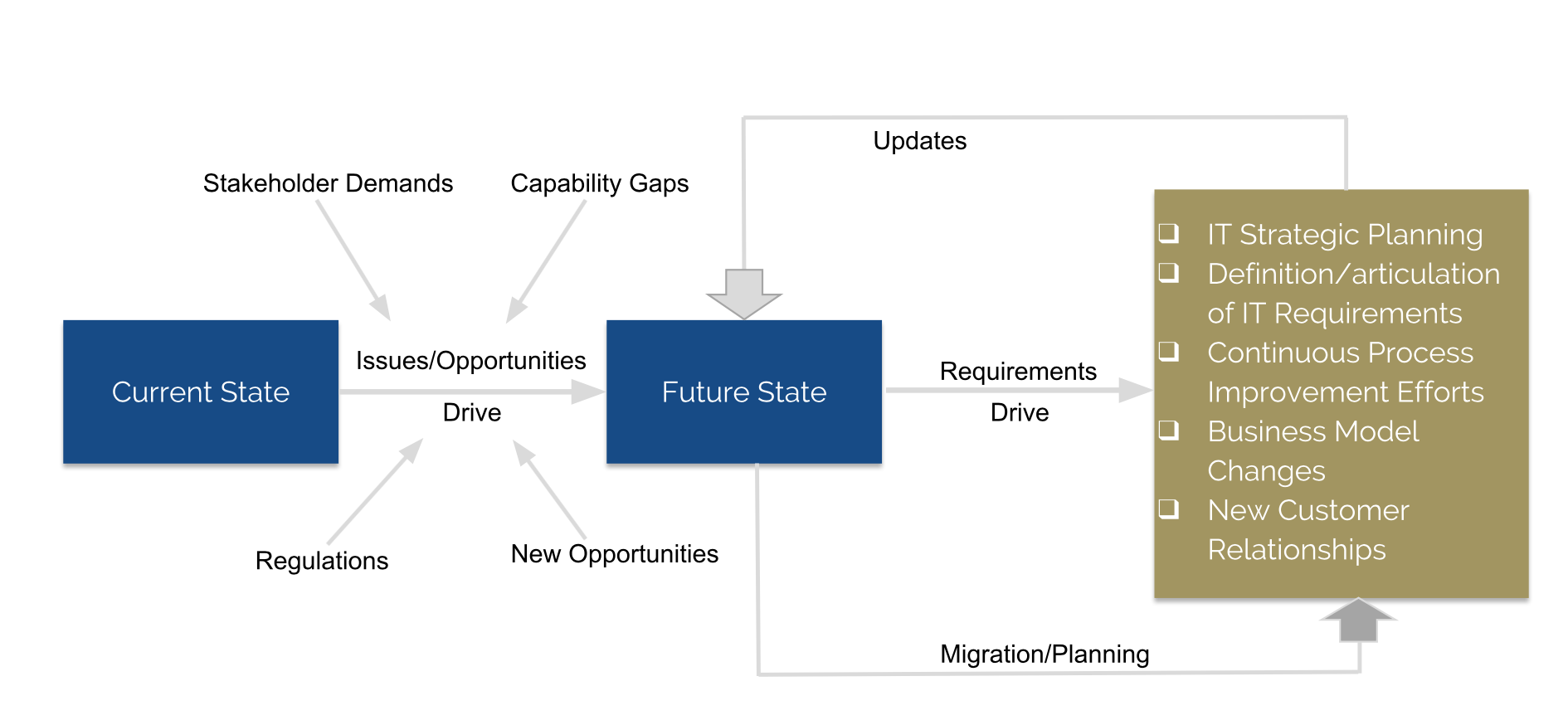
Business Continuity Planning
Y&L’s Business Continuity Planning (BCP) Services are based on a combination of multiple standards:
- Federal Financial Institutions Examination Council
- Best practices from The Institute For Continuity Management
- NFPA 1600 Standard on Disaster/Emergency Management and Business Continuity Programs
- ISO/DIS 22301 – Preparedness and continuity management systems
- BSI 25999-2:2007 and 25666:2010
Making sure your organization has the right BCP strategy can be challenging. At best, many organizations see this as a task to be completed and reviewed by the audit team; however, Y&L is known to be a reliable IT consulting provider in San Antonio, therefore, our approach is different. Your business continuity planning processes can be the first step towards…
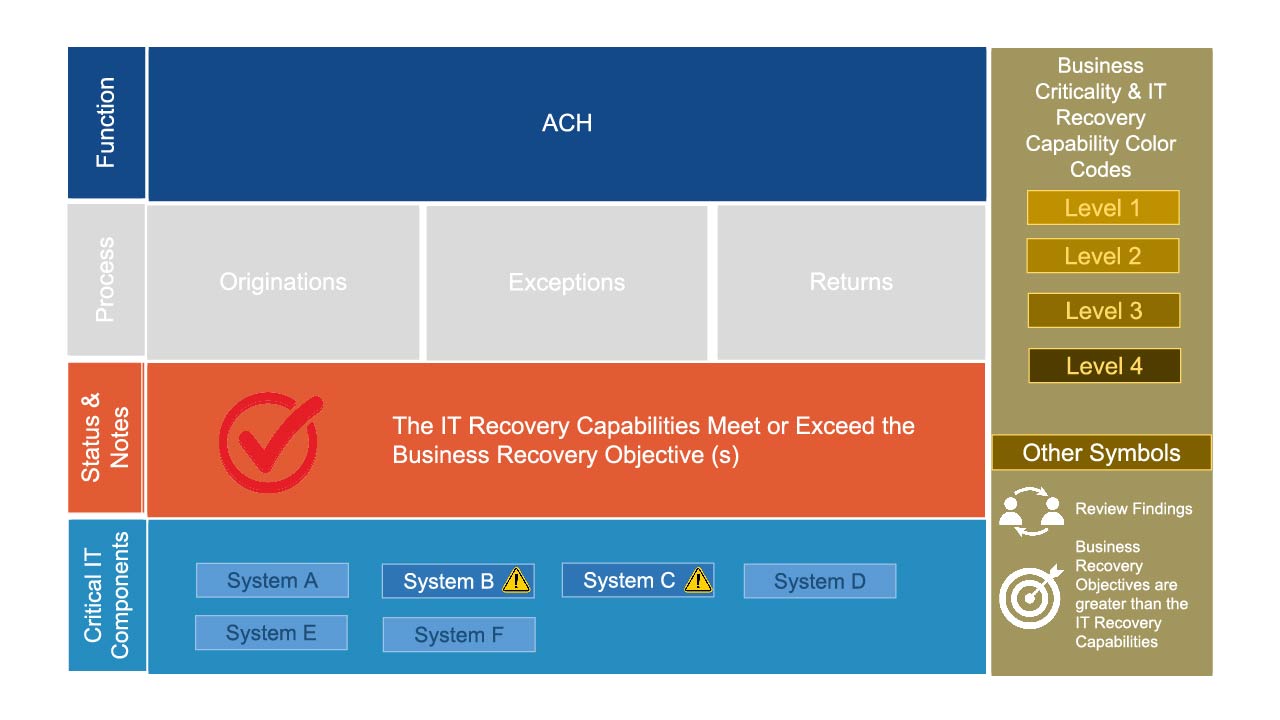
- Understanding your business process
- Realizing technology interdependencies
- Documenting potential business impacts
- Driving business and IT alignment
- Justifying IT infrastructure spending
- Knowing that you are really prepared
Every organization should have a Business Continuity Plan that includes:
- Recovery, resumption and maintenance of all aspects of the business – not just the recovery of the technology components
- An enterprise-wide approach with prioritization of critical business processes and functions
- A mechanism for regularly scheduled updates, tests, and reviews
- A process-oriented approach that includes:
- A business impact analysis (BIA) and workflow analysis
- A risk assessment and gap analysis
- Risk management plans
- Risk monitoring and testing procedures
- Other policies, standards, and procedures – as needed
The image below is helpful in understanding our BCP focus areas

To help you meet these objectives and create value for your organization along the way, Y&L has three distinct consulting engagements that can be customized to meet your particular needs:
- Critical Process and Business Impact Assessment
- BCP Risk Assessment & Gap Analysis
- Business Continuity Roadmap and Strategy

